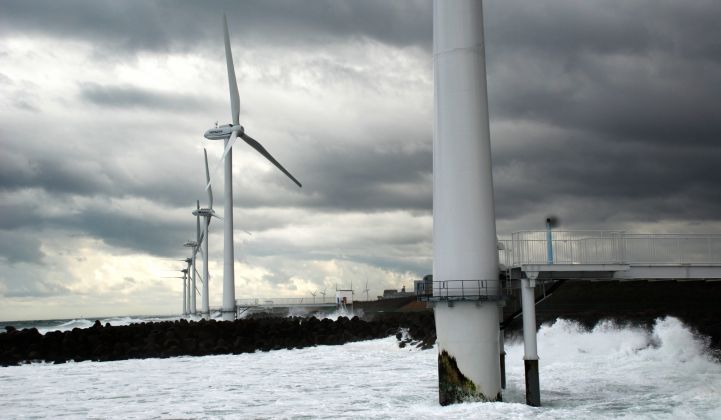Tokyo Electric Power Company (Tepco), Japan’s largest utility, has signaled major investments in offshore wind and hydro following a strategic shift announced in February.
President Tomoaki Kobayakawa last month told Nikkei Asian Review that the energy behemoth was readying to shell out 100 billion yen ($8.98 billion) on up to 7 gigawatts of national and overseas renewable generation.
“We decided to make renewable energy one of our core businesses,” Maki Murayama, of Tepco’s corporate communications office, told GTM.
Tepco’s renewable energy strategy has two components, he said. The company is looking to use its longstanding hydropower sector experience to grow international revenues through leading positions in Southeast Asian hydro generation.
Nationally, meanwhile, it hopes to get ahead in the nascent market for offshore wind. Tepco has already been experimenting with bottom-fixed offshore wind turbines for years off the coast of eastern Japan, Murayama said.
“As for floating wind, we have just started to develop our technologies,” he said. “Acquiring the technology and selecting a potential place in Japan would be the next step.”
Tepco is looking to partner with global manufacturers and local companies involved in the European value chain of the wind power business, he said.
Robert Liew, senior analyst for Asia-Pacific power and renewables at Wood Mackenzie, said the move to renewables was likely a response to lingering problems in restarting Japan’s nuclear fleet, which closed down following the Fukushima Daiichi disaster.
“Publicly there’s not much support for nuclear power in Japan,” he said. “Every time they try to switch it back on, there’s a lot of pushback from the local community. But if they don’t switch it back on, they can’t recover the billions invested in nuclear power.”
Tepco faced a worsening financial situation from gas and coal imports needed to keep the lights on while the nukes remained closed, he said.
Murayama confirmed that 90 percent of Tepco’s electricity generation today comes from thermal plants, but the amount of non-renewable capacity is expected to fall in the face of growing energy efficiency and renewables penetration in Japan.
Tepco’s strategy follows a playbook already used by other Japanese utilities. Kansai Electric Power Co., for example, also dialed down fossil-fuel reliance while moving toward renewables, nationally and internationally, and fighting to have nuclear plants reopened.
In May, Reuters reported that the utility, historically the most reliant on nuclear in Japan, is stalling on signing long-term liquefied natural gas contracts and ramping up renewable generation after getting some of its reactors back online.
Of the eight reactors that have restarted in Japan, four belong to Kansai, Reuters said. The utility is aiming to cut the proportion of fossil-fuel generation in its mix from 75 percent to 50 percent, the report claimed.
Tim Camp, head of turbine engineering at the marine consultancy LOC Renewables, said Tepco’s decision to pivot to offshore wind could accelerate the development of floating technologies in a market that has yet to set any targets for capacity.
“We expect floating wind to be commercially successful in the near future,” he said. “Tepco’s commitment to offshore technology, and floating wind in particular, will provide important impetus in this direction.”
The Japanese utility was wise to seek international partnerships, he said, because rapid growth in Asian offshore wind would likely test local industrial players.
And Robert Bates, offshore wind underwriter at the renewable energy insurance firm GCube, warned that adjusting to offshore wind operations might not be straightforward. “For Tepco, the transition from nuclear to offshore wind will result in a shifting exposure profile,” he said.
“In a departure from the low-frequency but very high-severity risks associated with nuclear, offshore wind presents a risk landscape defined by high-frequency but low-severity issues,” said Bates.
Tepco would have to tweak its operations and maintenance practices to handle regular small issues such as blade repairs and gearbox malfunctions, Bates said. But in the absence of other obvious opportunities, the Japanese power giant may not have much of a choice.
“This investment in renewable energy is a way to hedge against the future,” said Wood Mackenzie’s Liew.




